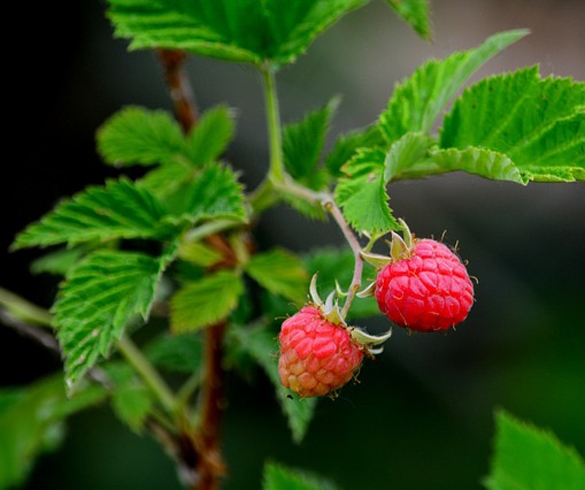
Growing Red Raspberries
– Raspberries are so delicate and perishable they\’re scarce at the supermarket and fruit stands and expensive if you find them. Fortunately, they\’re easy to grow at home. Although naturally adapted to a cool climate, varieties have been developed for virtually all parts of the country. Most varieties bear one crop in the summer soon after the strawberry harvest ends. Certain varieties known as everbearers or fall-bearers have two crops each year, midsummer and fall. A well-tended raspberry patch can thrive indefinitely.
Selecting Varieties
The first step is to select a variety that\’s right for your region. Check with your county Extension Service. You can save money by digging plants from a friend\’s patch, but there is always the risk of acquiring diseased plants when you get them secondhand. A safer bet is to buy certified virus-free plants from a nursery.
A 30-foot row of raspberries, trained to single stems against a wall or fence, will yield about a quart of fruit every other day for three weeks, and that\’s plenty of raspberries for most people. A more traditional hedge-type planting will yield twice that amount, although it takes at least twice the space. Intensively trained berries are extremely productive. To get the most from red raspberries, plant at least two kinds: a main crop variety for heavy early summer harvests and a fall (or everbearing) type to close out the berry harvest. Where the season is long, you may need to plant two fall varieties so you can keep picking until frost.
Planting Tips
Early spring (late winter in the South) is the best time to plant raspberries. If you\’re importing plants from a friend\’s patch (or moving plants around in your own expanding patch), spring is the time to dig them. Keep bare-root raspberry roots moist by covering them with damp peat moss or soil until planting time. Soak the roots in a bucket of water for an hour before setting plants in the garden. Set each plant in a well-watered hole that\’s wide enough and deep enough for the roots to spread out. Firm the soil over the roots and cover each cane an inch or two deeper than it was previously grown. Water plants and cut each cane back to 8 inches.
Summer-bearers should begin to yield in their second year and bear full crops each succeeding summer. Vigorous everbearers may produce some fruit the very first fall. Heavy picking usually lasts about two or three weeks in early summer; everbearers produce another crop for several weeks in early fall. Raspberries need yearly pruning to keep them productive, so consult a resource for guidelines.
To enjoy top-quality fruit and prevent pest problems, pick berries as soon as they ripen; they should easily slide off the small white core that stays on the stem. Pick the berries directly into pint or smaller containers so they don\’t get crushed, and keep them out of the sun. Don\’t wash the delicate fruit until you\’re ready to eat it.
A former floral designer and interior plantscaper, Kathie Bond-Borie has spent 20 years as a garden writer/editor, including her current role as Horticultural Editor for the National Gardening Association. She loves designing with plants, and spends more time playing in the garden – planting and trying new combinations – than sitting and appreciating it.
Source
National Gardening Association

